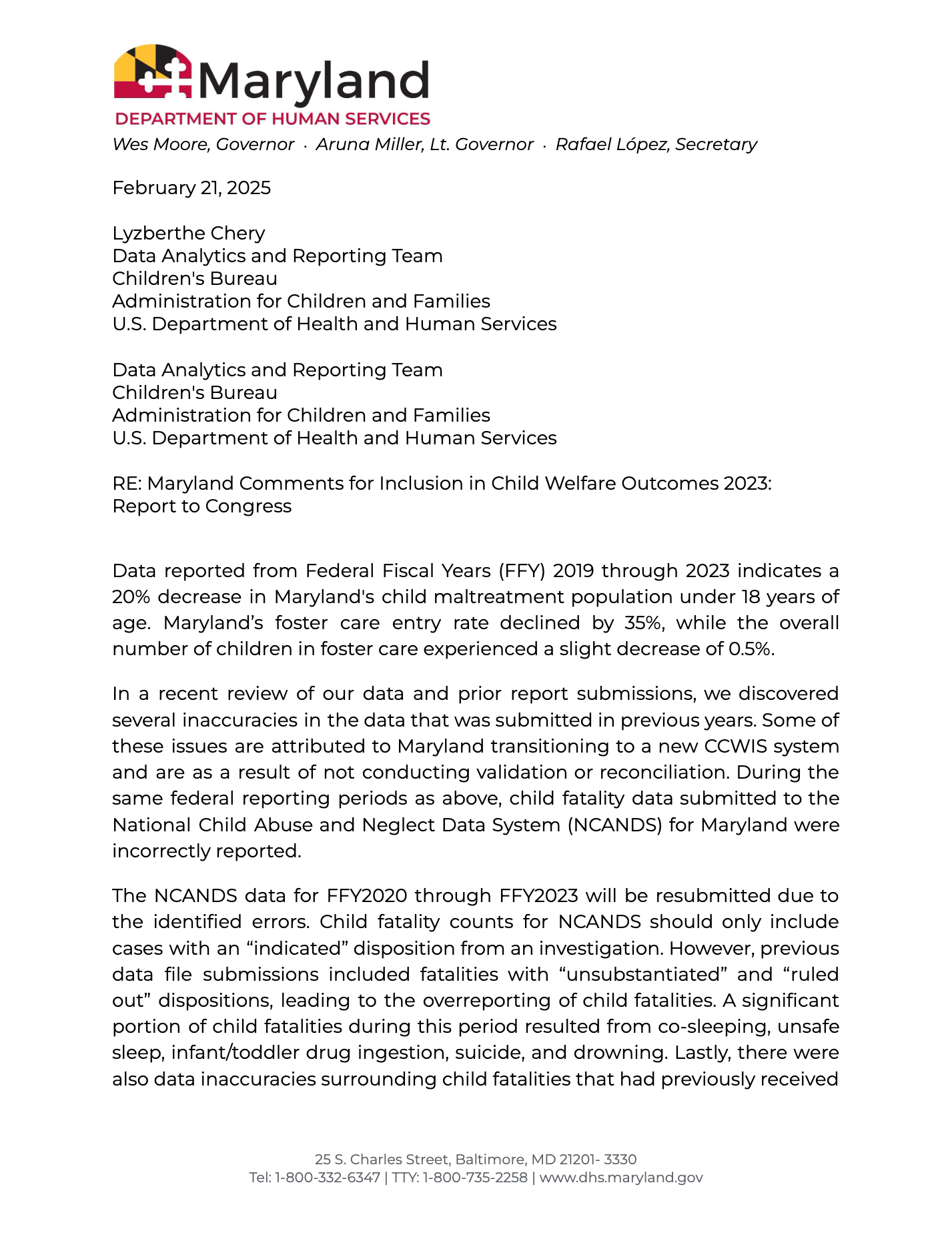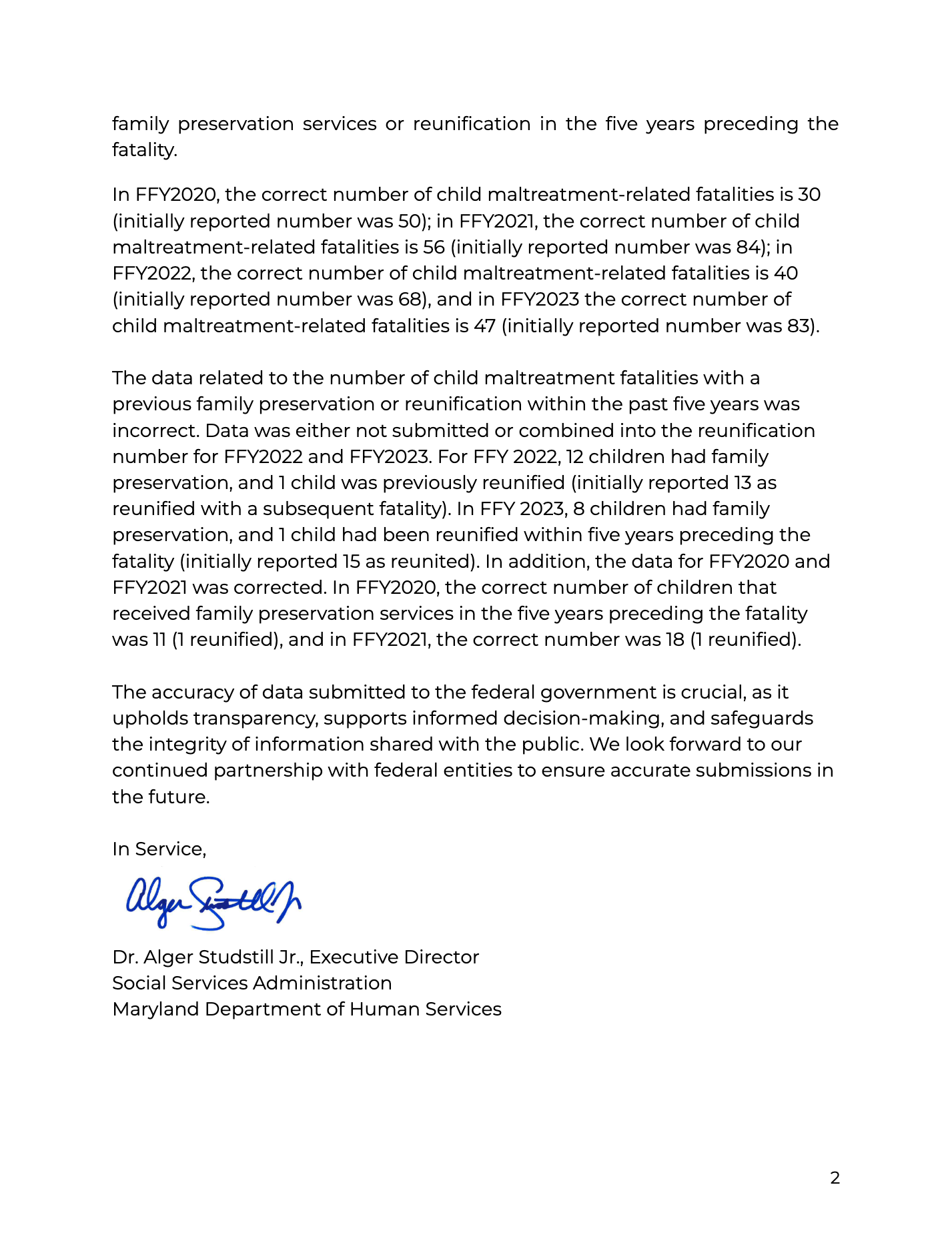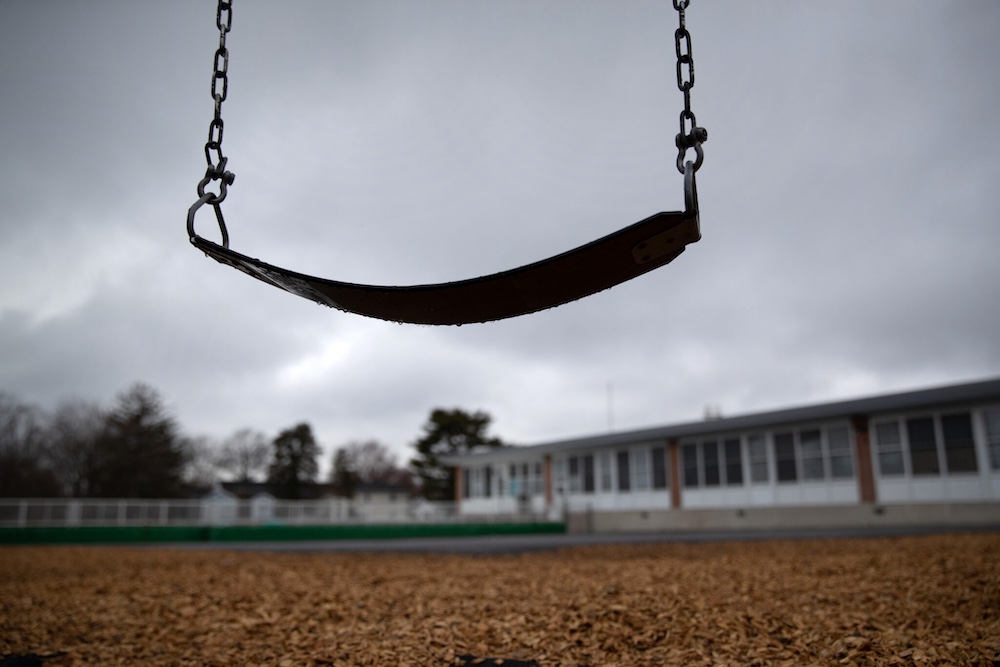In recent years, Maryland has reported notably high child fatalities related to mistreatment and abuse — well above the national average. But state officials now say that Maryland has been reporting incorrect numbers for the last five years, and the number is far lower than initially reported.
“It was really just us not checking our homework and not double-checking our work,” said Alger Studstill Jr., the executive director of the Social Services Administration in the Maryland Department of Human Services.
“Our highest priority in this work is to ensure that children across the state of Maryland are safe and well,” he said. “We’ve been working with national consultants to look at how we are reviewing our child maltreatment fatalities, but also looking at our data to ensure that these types of reporting errors don’t happen again.”
Studstill said that “one fatality is one too many,” and the department will be incorporating the new data into future efforts to improve child welfare services in the state.
Meanwhile, advocates and child welfare experts say the time it took to investigate the Maryland’s soaring child fatalities is indicative of the lack of attention the issue gets.
Emily Putnam-Hornstein, with the School of Social Work at University of North Carolina at Chapel Hill and the organization Lives Cut Short, hopes that the corrected data can serve as a “wake-up call” for states to pay closer attention to the issue.
“I don’t think Maryland is alone in not having a great handle on exactly what these maltreatment fatality counts consist of,” she said. “If we’re trying to prevent them (child maltreatment fatalities), we have to know exactly what we’re trying to prevent.
“These data matter so much from a public health and prevention standpoint. That’s why I would love to see not just corrected numbers but to see much more transparency and disclosure of the specifics of the deaths that occurred, not just in Maryland but all over the states,” Putnam-Hornstein said.
The child maltreatment fatality update is part of a data overhaul for the department that was spurred by recent reporting in the Baltimore Banner that pushed the problem of child fatalities to the forefront for state officials.
“Once we were made aware of the problem, we got to work to address it,” Studstill said.
Every year, states report information on child maltreatment to the federal Children’s Bureau, overseen by the U.S. Department of Health and Human Services, which get published in the annual Child Maltreatment report.
The most recent report, in January, published data from 2023. That year, Maryland reported to federal officials that 83 children had died due to maltreatment, resulting in a rate of 6.09 fatalities per 100,000 children from birth to 17 years old. The national rate was 2.73 fatalities per 100,000 that same year, when just under 2,000 children died due to maltreatment.
But Studstill said it appears the department included any case in its report where a maltreatment investigation was opened, not just those where maltreatment, neglect or abuse were confirmed. As a result, the state overreported deaths for 2023, when it now says there were 47 deaths.
“They (the federal agency) are looking for child fatalities where there was child maltreatment that was ‘indicated’ — meaning that the fatality was a direct result of abuse or neglect,” Studstill said in a recent interview. “What Maryland has done previously is we’ve been reporting all fatalities.”
“We operate an abuse hotline, so whenever we receive a call, we have screening-in criteria that we will review,” he said. “If the fatality is alleged to have been caused by a parent or caregiver, then we screen that report in.”
Studstill said the 83 cases reported in 2023 were “all of the cases that got screened in,” while the corrected 47 cases are those where “there was an indicated finding – meaning that the fatality was a result of neglect or abuse by a caregiver.”

A chart showing the number of child fatalities in Maryland reported to federal officials and new data showing what the state believes the accurate numbers are. Courtesy of the Maryland Department of Human Services
The state said that of the lower number of deaths where neglect or abuse was indicated, a “significant portion of child fatalities during this period resulted from co-sleeping, unsafe sleep, infant/toddler drug ingestion, suicide and drowning.”
While national data for 2024 won’t be available until next year, state officials say Maryland will report 46 child fatalities in the next edition of Child Maltreatment.
“Every preventable death is a tragedy. It is particularly tragic when that death occurs at the hands of a parent,” Putnam-Hornstein said. “When I read the letters and the statements that were circulated in terms of how these errors occurred, as someone who works with data, I totally understand how this could have happened.”
‘Collective failure’
Putnam-Hornstein and other social services experts say that despite the lower reported fatalities in the state, there is still work to be done to improve child welfare and reduce the number of child deaths overall.

A graph showing the number of child fatalities Maryland reported to federal officials the number of deaths the state now believes occrred. (Chart courtesy Maryland Department of Human Services)
“I think the good news from the public standpoint is we now know what baseline we are working from, as we try to protect more children and prevent more fatalities,” Putnam-Hornstein said. “I continue to think that there’s tremendous room for improvement in how we investigate potential child maltreatment fatalities … and then what we do with that information to try to improve system coordination.”
Richard Barth, professor at the University of Maryland School of Social Work, said the corrected data is not necessarily a comfort to those in his field, as he believes there are issues with the national reporting system at large.
“I don’t think any of us feel that the numbers we have really represent the risks to kids,” Barth said, noting that there are often few differences between child fatalities where abuse and maltreatment is indicated and those where the mistreatment is unsubstantiated or ruled out.
Barth says that the new data is “a good wake-up call” for the state to bolster data on kids in the welfare system to better understand the factors that lead up to child mistreatment fatalities.
“Families that are involved in child welfare are often involved for quite some time,” he said. “The more that we know about the accumulating risks for them, the better.”
Putnam-Hornstein agreed.
“Hopefully this is a wake up call that will lead to improvements in data collection, not just in Maryland but other states. And hopefully corresponding improvements in how our systems respond to child safety concerns,” she said.
Putnam-Hornstein said the data collection issues are “arguably a collective failure on the part of many of us.”
“I could argue that researchers should have been looking at that data and asking questions of Maryland and other states, sooner. I could argue that if the federal government is collecting that data and publishing data … one would presumably hope that there’d be some additional policies done and some questions raised,” she said.
“And then of course, most locally, one would hope that Maryland would have been looking closely at those trends and the comparisons across states,” she said.


by Danielle J. Brown, Maryland Matters
March 3, 2025
Maryland Matters is part of States Newsroom, a nonprofit news network supported by grants and a coalition of donors as a 501c(3) public charity. Maryland Matters maintains editorial independence. Contact Editor Steve Crane for questions: [email protected].


























